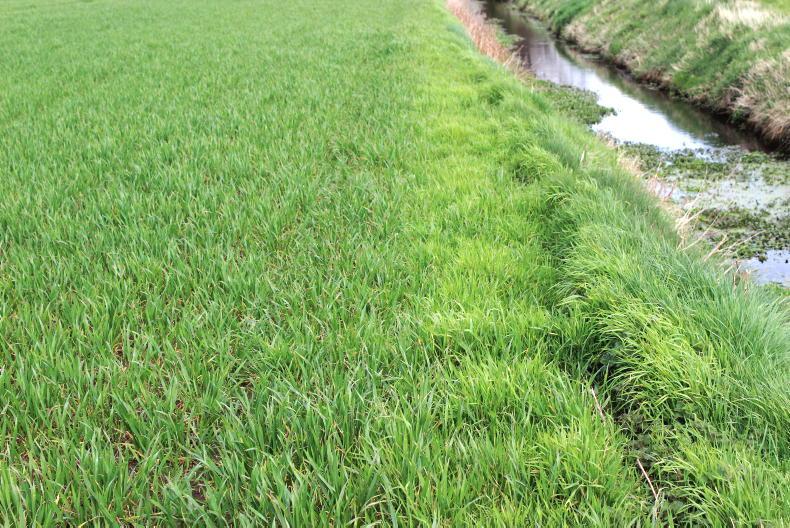Political agreement was reached on Friday from the European Council and European Parliament. Here we look at the detail of what has been agreed.
Political agreement was reached on Friday from the European Council and European Parliament.
Here we look at the detail of what has been agreed.
This will be presented to the Council of Ministers next week and European Parliament in July.
Convergence
The rate of convergence of farm payments is set at 85% of the national average.
All Irish entitlements will reach at least €225/ha by 2026 at the latest. This will mean cuts for farmers above the average to fund increases for those below.
The new reforms are set to come into force from January 2023.
In the previous CAP, the maximum cut for any one farmer through convergence was limited to 30%. This time around, there is no limit to the cut.
It will be up to member states to decide if they wish to go beyond the 85% minimum.
Eco schemes
Some 25% of each country’s direct payment budget has been ringfenced for eco schemes.
Every farmer in Ireland will take a linear 25% cut to their payment to create the eco scheme fund.
Farmers will then be paid to carry out climate and environmental actions – if they choose to take part in eco schemes.
If farmers do not take up eco schemes and draw down the full eco scheme fund, there is a risk that the eco scheme money could go unspent.
To ensure unspent funds are not lost by members states, there will be a learning period in 2023 and 2024.
During the learning period, member states will be expected to reach a floor of 20%.
In Ireland’s case, it would require farmers to draw down at least €240m from a €300m fund.
Any unspent funds above the 20% floor can be transferred to other spending areas within the country, such as direct payments.
If the floor is not reached, member states can still use the money in different areas, but will be expected to compensate the difference in later years.
This could be done through a higher budget for eco schemes or through agri-environmental schemes such as GLAS or REPS.
Front loading payment for small farms
All member states will be required to provide a redistributive payment (from farms with large payments to those with smaller payments) of at least 10% of the country’s direct payment budget.
This amounts to €120m in Ireland’s case.
The money will be redistributed mainly through top-up payments on the first hectares of a farm, known as front loading.
The capping (see below) of payments can be used to create this fund, but a linear cut may also be required to reach the 10% in Ireland’s case, as there are few large payments.
Ireland could also seek an exemption if it can demonstrate that redistributive needs are met through other instruments, such as convergence.
Capping of direct payments
Member states can choose to enforce a maximum limit of €100,000 on individual farm payments across Europe.
They can also choose to make reductions to payments greater than €60,000.
Farmers could be allowed to deduct 50% of agriculture-related salaries from their total payment before reduction.
Young farmers
At least 3% of Ireland’s CAP budget must be used to support young farmers.
This could cover income support, investment or start-up aid for young farmers.
Rural development and the environment
At least 35% of the rural development budget must be spent on environmental and climate-related schemes and measures.
Tougher cross-compliance rules
Irish farmers, particularly tillage farmers, face a much tougher set of Good Agricultural and Environmental Conditions (GAECs) to qualify for payments in the next CAP.
Buffer strips along water
All farms with land along a watercourse will be expected to establish a buffer strip at least 3m wide under GAEC 4.

There must be no fertilisers or pesticides applied to these areas.
Crop rotation
Under GAEC 8, tillage farmers will be expected to change crop at least once a year, except in the case of multiannual crops, grasses and other herbaceous forage and fallow land.
Farms where over 75% of tillage land is used for the production of grass or leguminous crops or where over 75% of the eligible agricultural area is permanent grassland will be exempt from GAEC 8.
Tillage farms less than 10ha in size are also exempt.
Member states can also choose to impose a maximum limit on the area covered with a single crop to prevent large monocultures.
Non-productive areas
GAEC 9 dictates that tillage farmers will have to set aside at least 4% of their farm as non-productive areas, which may include land lying fallow, or landscape features.
They can choose catch crops or nitrogen-fixing crops, but the minimum percentage will increase to 7%, of which 3% must be non-productive.
Peatland protection
Under GAEC 2, member states must establish a set of standards to protect carbon-rich soils, but, in doing so, must ensure that agricultural activity can continue to take place on them.
This allays fears in Ireland that peatland soils would become ineligible for payment.
The new CAP has to be formally approved by the European Parliament and adopted by the Council before it can enter into force.
Agricultural ministers will gather in Luxembourg for a Council meeting on 28 and 29 June to debate and potentially approve the deal.
The full European Parliament must meet for a plenary to vote through the proposals before it is fully finalised, with the next meeting scheduled for 5 July.
Assuming both sides approve the deal, member states have until 31 December 2021 to submit their draft strategic plans.
The Commission will then have six months to assess and approve the plans, which will then enter into force at the beginning of 2023.





SHARING OPTIONS: